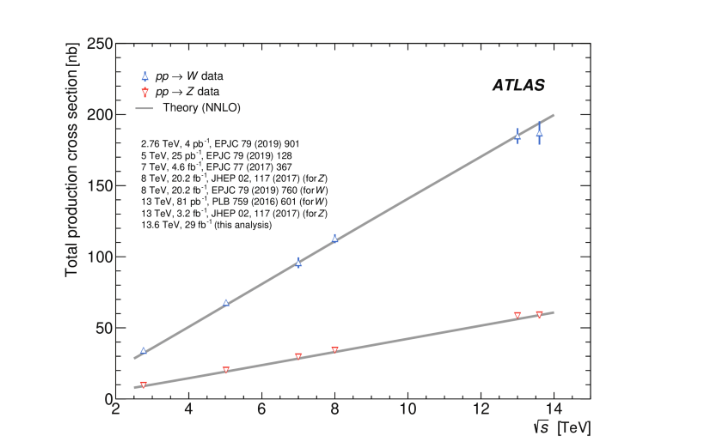First ATLAS measurement of W and Z boson production using Run-3 data
For over four decades, the study of W± and Z bosons, discovered at CERN’s SPS collider, has been integral to particle physics research. As carriers of the weak force, these bosons play a crucial role in elucidating the electroweak sector of the Standard Model. Moreover, they offer a window into the possibility of new physics beyond the Standard Model, with deviations from theoretical predictions potentially indicating novel particles or interactions.

ATLAS Physics Briefing: First ATLAS measurement of W and Z boson production using Run-3 data
The latest breakthrough from the ATLAS Collaboration marks the first measurements of W and Z boson production rates ("cross sections") using LHC Run-3 data, performed at the remarkable centre-of-mass energy of 13.6 TeV. These measurements not only serve as a litmus test for the Standard Model but also build upon ATLAS’ extensive portfolio of cross-section measurements at varying energy levels.
In addition to establishing benchmarks for the Standard Model, this analysis introduces a pioneering measurement of the ratio of top-quark-pair to W-boson production cross sections, further enriching our understanding of fundamental particle interactions.
To achieve these milestones, ATLAS physicists focused on the production of W-bosons decaying into one charged lepton (electron or muon) and one neutrino, as well as Z-bosons decaying into oppositely-charged lepton pairs. These channels, characterized by large cross sections and clean experimental signatures, facilitated more precise measurements, aided by sophisticated data-driven and simulation-based methods to mitigate background effects.
The release of these groundbreaking measurements underscores the ATLAS Collaboration's commitment to pushing the boundaries of particle physics research, offering new insights into the fundamental forces and constituents of the universe.
Read the full ATLAS Physics Briefing